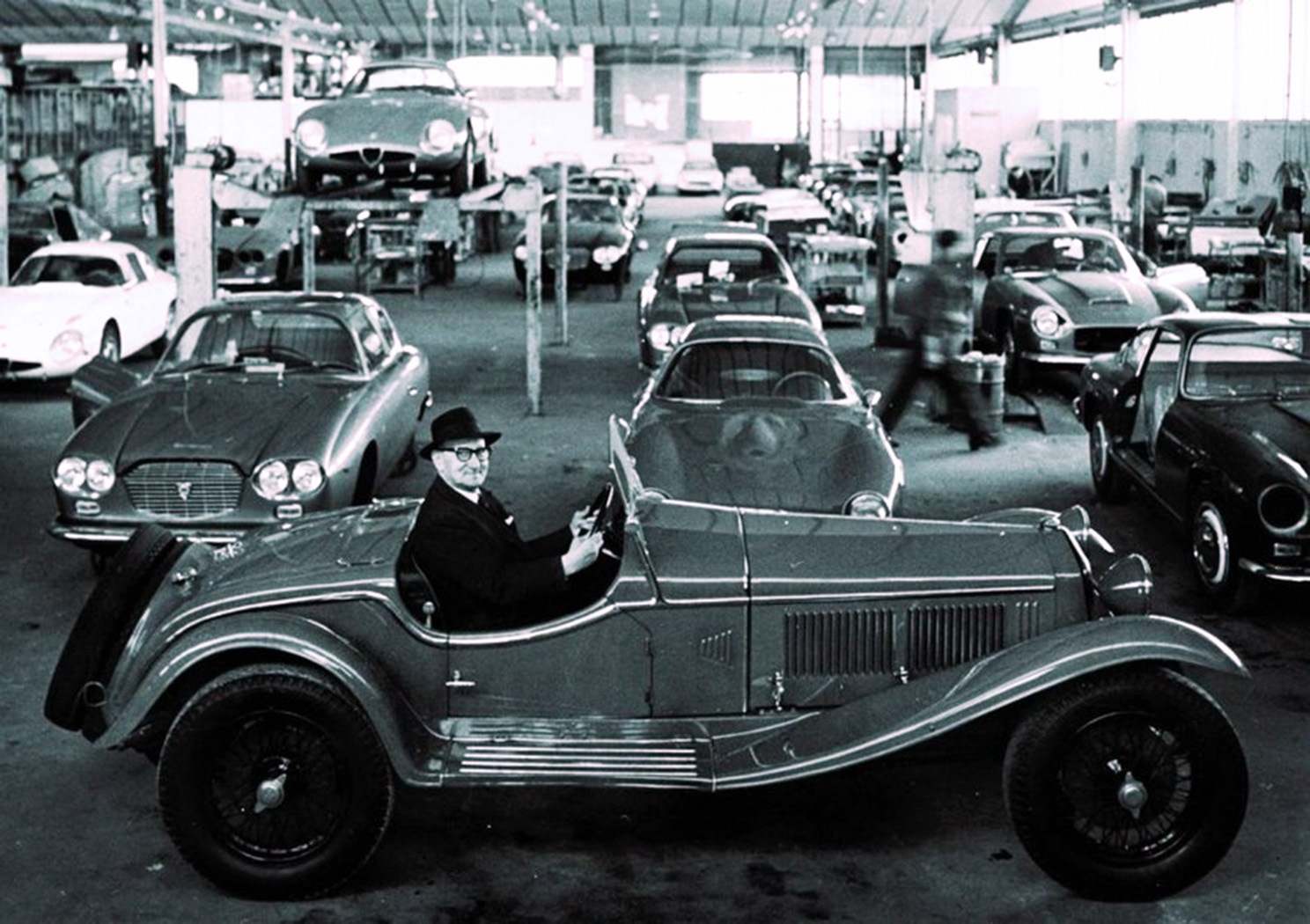Part 89: Zagato
By David Cavaliere
There are only a few carrozzeria whose designs are like a fingerprint. I can always tell a Zagato design. Maybe it is an intangible feature – how the compound curves join to create the ideal shape, marrying form and function; where the marriage becomes one of beauty and defines the whole. Next year in 2019 will be a celebration of the 100th anniversary of the founding of Zagato – one of the world’s great styling houses. In 1890, Ugo Zagato was born in the village of Gavello. His mother originally envisioned him becoming a priest, instead, Ugo became enamored with the automobile. At age 15, his father died, forcing Ugo to leave school. He moved to Germany to work for a coachbuilding firm and after a short stint in the military in 1909, he joined the joined Carrozzeria Varesina, gaining experience not only in the automotive field, but also in aerodynamics. During WWI, he worked for Officine Aeronautiche Pomilio, an aircraft manufacturer. It was here that Ugo refined his concepts for integrating component strength with dynamic styling, while adding the virtue of lightness. It became not only Ugo’s passion, but an objective that has permeated the company for a century.
Automobiles of the pre-World War One era, especially those intended for racing, were often heavy cars with enormous engines and tons of weight to haul around. For his part, Ugo Zagato wanted to change this. In 1919, set up his own firm, Carrozzeria Ugo Zagato & Co., to construct and repair aircraft and automobiles. His concepts for construction were similar to Superleggera (see Part 87 – Carrozzeria Touring, February 15, 2018), fastening Aluminum body panels directly to an aluminum frame. He began working with Bianchi (Part 9: Bianchi and AutoBianchi, March 17, 2016), Diatto (Part 26 Diatto – From Wagon Wheels to Grand Prix Racers, July 21, 2016) and Itala (Part 51 – Itala, March 176, 2017), plus work on the first monocoque automobile – the 1925 Lancia Lambda (Part 60 – Lancia, The Early Years, June 8, 2017). It did not take long for Ugo to establish a close working relationship with Alfa Romeo.
In 1925, Vittorio Jano, Alfa Romeo’s chief engineer, asked Ugo to fashion the body for the new Alfa 6C 1500. The car was designed along the principles that Ugo most appreciated – it was light and fast. He created a sleek lightweight body for the car. Zagato designed and built numerous types of bodies for the subsequent 6C 1750, which achieved victories in the Mille Miglia in 1929 and 1930. Soon, the orders from other manufacturers flooded the carrozzeria. Bugatti, Diatto, Maserati, OM and Rolls-Royce all became clients of Zagato.
In the 1930s, Zagato continued building light, aerodynamic cars. He adopted numerous details that incrementally improved performance. A total of thirty-six Zagato bodied cars were at the start of 1938 Mille Miglia. The wartime years were difficult for everyone in Milan. A target for allied bombing, much of the city was destroyed, including Ugo’s shop. Rebuilt as La Zagato outside Milano after WWII, Ugo was joined by his sons Elio and Gianni. It was during these years that he introduced his new concept for the automotive body called the “Panoramica.” Maserati, Lancia, Fiat and Ferrari were all graced with this innovative body.
Elio Zagato was one of the pioneers of the Gran Turismo racing category. It required at least 30 examples of a car to be produced in order to qualify for the class. Conceived as a grouping for the gentleman sports car enthusiast (which described Elio), these would be comfortable, well-appointed and finished cars that could be driven on an everyday basis, yet would be sufficiently light and aerodynamic to race on weekends. They were the original track-day cars. The cars bodied by Zagato in the 1950s were a who’s who of the GT world – AC, Alfa Romeo, Abarth, Aston Martin, Bristol, Ferrari, Fiat, Maserati, Jaguar and Osca.
During the early 1960s, the delicate balance between handcrafting car bodies and the need for efficient industrial production spelled the demise of many carrozzeria. Wisely, Elio Zagato found a larger location in Terrazzano and in partnership with Alfa Romeo, produced the several highly successful Giulia models, including the Junior Zagato. For Lancia, Zagato created the ‘Sport’ series for the Appia, Flaminia, Flavia and Fulvia models, also highly successful in their own right.
Ugo Zagato passed away in 1968. Elio successfully continued to expand the business for the next 40 years. He passed away in 2009. The company is now in the hands of Elio’s son, Andrea and daughter-in-law, Marella. She too, has the history of the Italian automobile coursing through her veins. Marella is the daughter of Piero Rivolta and granddaughter of Iso founder Renzo Rivolta, whose company was covered one year ago on March 2nd in Part 49 of this series.
There is only one more segment to go in this series. Next week will conclude the History of the Italian Automobile with some manufacturers whose work didn’t warrant an article, yet still deserve mention. Please send comments to [email protected].





